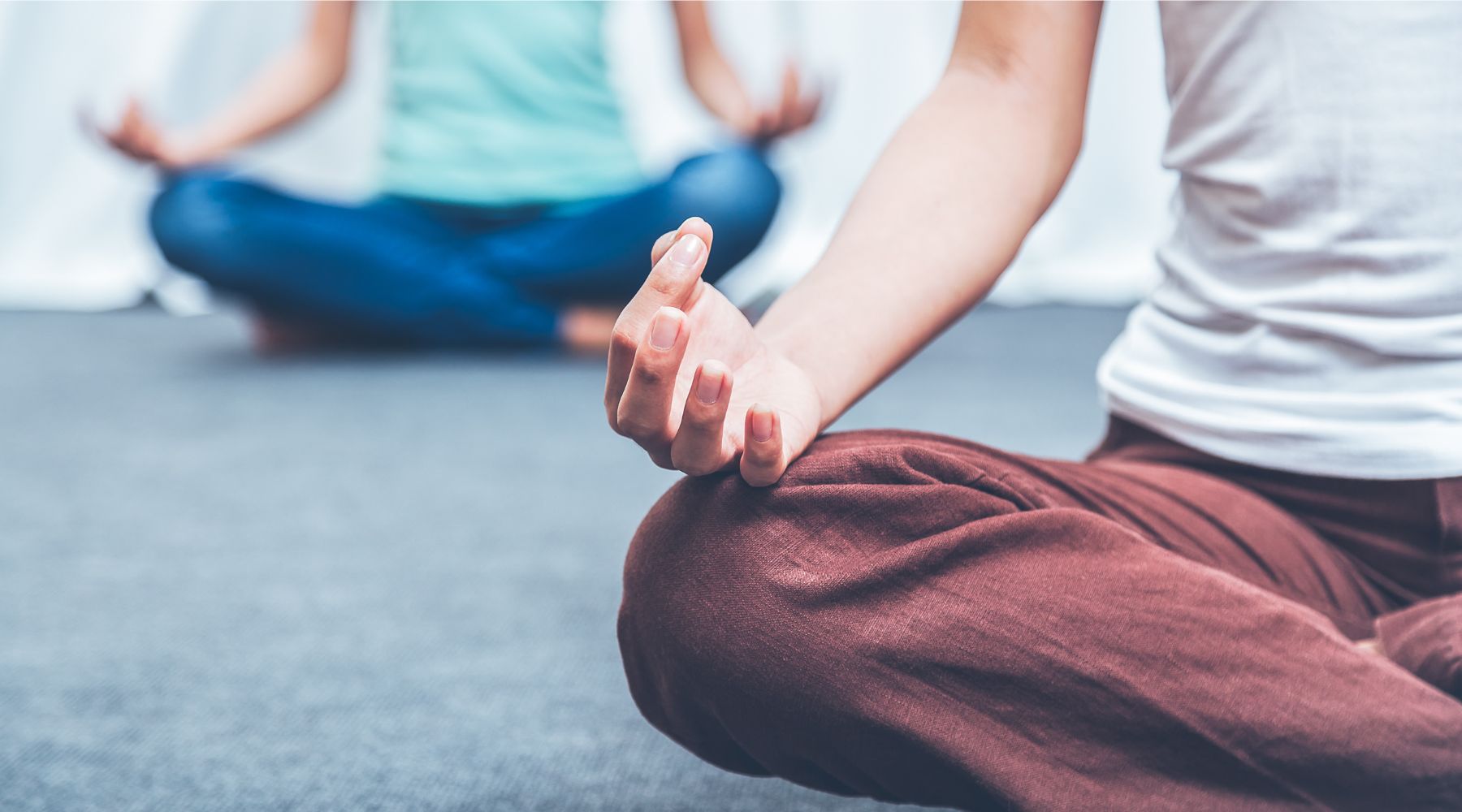
How Five Minutes of Stillness Can Remake Your Day
The Surprising Power of a Five-Minute Pause
Our brains were not built for the constant hum of notifications and endless to-do lists. We often feel like an old computer with too many tabs open, running slow and on the verge of overheating. What if you could hit a reset button? That’s the simple magic of a daily meditation reset. Many of us hear the word "meditation" and picture long, silent hours on a cushion, a goal that feels completely out of reach. But the idea that you need an hour of stillness to find peace is a myth.
Five minutes is not a shortcut; it's a potent and sufficient dose of mindfulness. Think of it as a quick system reboot for your nervous system. When stress builds, our bodies enter a "fight or flight" mode. A short pause interrupts this cycle, gently activating the part of your nervous system responsible for rest and calm. It’s a biological sigh of relief that you can give yourself anytime.
We can all picture that moment of hesitation, thinking, "I'm just too busy for this." But consider the five minutes you might spend waiting for your coffee to brew or scrolling through someone else’s vacation photos. What if you gifted that time back to yourself? This simple 5 minute meditation guide is designed to be practical, not perfect. It’s about finding a small pocket of peace in the middle of a messy, beautiful, and busy life.
Your Simple Guide to a Five-Minute Reset
Learning how to meditate for 5 minutes is less about following strict rules and more about gently showing up for yourself. Here is a simple path to begin your practice, offered with the warmth of a friend holding space for you.
- Step 1: Find Your Spot. First, let go of the idea that you need a perfect zen den. Your spot can be a chair in a quiet corner of your home, your parked car between errands, or even a moment of peace at your desk. The only goal is to find a place where you can be relatively undisturbed for just a few minutes.
- Step 2: Get Comfortable and Set a Timer. Sit in a way that feels both relaxed and upright. This posture helps you stay aware without being rigid. To keep your mind from wondering about the time, set a gentle alarm for five minutes. This simple act allows you to fully immerse yourself without the anxiety of clock-watching.
- Step 3: Tune Into Your Breath. Close your eyes if it feels comfortable and simply begin to notice your breath. Feel the air flowing in and out. There’s no need to change it, control it, or judge it. Your breath is simply an anchor, a gentle rhythm to return to. If silence feels a bit loud at first, exploring some of our guided music meditations can help create a peaceful and supportive atmosphere for your practice.
- Step 4: Gently Conclude. When your timer softly chimes, resist the urge to jump right back into your day. Take one last, deep breath. Notice, without any judgment, how you feel. A little calmer? A bit more centered? Whatever you notice is perfectly fine.
Remember, there is no "winning" or "failing" at meditation. The only goal is the gentle practice of returning to your breath, and to yourself, again and again.
What to Do When Your Mind Has Other Plans
So you’ve settled in, you’re ready for five minutes of bliss, and suddenly your brain decides it’s the perfect time to draft a grocery list, replay an awkward conversation from last week, or worry about a work email. Welcome to being human. A wandering mind isn't a sign of failure; it’s just the brain doing its job. Thinking is what it does.
The trick is to treat these thoughts with a bit of playful kindness. Imagine you’re training a sweet but very distractible puppy. When it wanders off, you don’t scold it. You just gently guide it back. That’s all you have to do with your mind. Notice the thought, and gently guide your attention back to your breath. That’s it. That’s the whole practice.
Sometimes other things pop up, like restlessness or a sudden wave of drowsiness. If you feel fidgety, try a quick mental scan of your body to release any tension. If you feel sleepy, sit up a little straighter. As research highlighted by Mindful.org explains, the brain's default mode network is wired to wander. The act of noticing and returning your focus is the actual "exercise" in meditation. It’s not about having an empty mind, but about becoming aware of your thoughts without getting lost in them. This practice of observation builds profound self-awareness. As the experts at Ritratt.ai note, this kind of awareness is the foundation for a coherent sense of self, both internally and externally.
Creative Ways to Spend Your Five Minutes
Some days, focusing on the breath feels natural and easy. On other days, it can feel like trying to hold onto a slippery fish. For those moments, it’s helpful to have a few other quick mindfulness exercises in your back pocket. Think of these as different flavors of meditation to keep your practice fresh and engaging.
- A Mini Body Scan: Close your eyes and mentally travel through your body. Start at your toes and slowly move your awareness up to the crown of your head. Simply notice any sensations—warmth, coolness, tingling, or tension—without needing to change them. This is a wonderful way to reconnect with your physical self.
- A Sensory Meditation: Ground yourself firmly in the present by focusing on one of your senses. You could close your eyes and identify three distinct sounds you can hear, far and near. Or, you could notice the feeling of your clothes against your skin or the temperature of the air. This pulls your awareness out of your head and into the world around you.
- A Simple Mantra or Affirmation: Silently repeat a calming word or phrase with each breath. It could be as simple as "peace" on the exhale or a gentle affirmation like "I am calm." This gives a busy mind a simple, soothing task to hold onto. Using a personal mantra is a beautiful way to explore the power of focused intention, a principle at the heart of why our custom manifestation meditations can be so supportive.
Choosing Your Five-Minute Reset
| Technique | Primary Focus | Best For... | Feels Like... |
|---|---|---|---|
| Mini Body Scan | Physical Sensations | Releasing tension and feeling grounded in your body. | A warm, gentle check-in with yourself from head to toe. |
| Sensory Meditation | External Environment | Calming an anxious mind by rooting you in the present. | Tuning into the world around you with fresh ears and senses. |
| Mantra/Affirmation | A Calming Thought | Focusing a very busy or scattered mind. | Giving your mind a simple, soothing task to hold onto. |
This table offers a quick comparison to help you choose a technique based on how you're feeling. There's no right or wrong choice—it's about what feels most supportive to you in the moment.
Making Stillness a Daily Habit
The true benefits of short meditation come not from duration, but from consistency. A daily five-minute practice creates a far more profound shift than a sporadic one-hour session. The secret to consistency is making it easy. Try "habit stacking" by linking your meditation to something you already do every day. Perhaps you sit for five minutes right after brushing your teeth or before you take your first sip of coffee.
This small, loving investment in your well-being compounds over time. You may start to notice improved focus, a greater sense of emotional balance, and a deeper connection to your inner world. It’s a simple yet powerful way to feed your spirit each day, creating a ripple effect of calm and clarity that touches everything you do.
And for those days when you feel called to explore your inner landscape more deeply, continuing your journey with a structured program can be a beautiful next step. Our Chakra Meditation Course offers a wonderful path to deepen your practice and connect with your energy centers.




